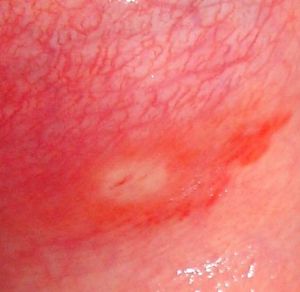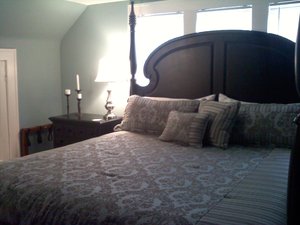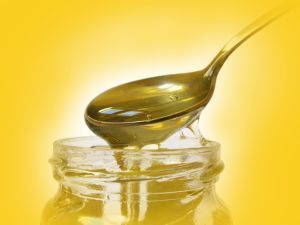Keeping your senior free of bedsores, also known as pressure sores, requires a lot of vigilance.
First make sure that you have two important pieces of equipment: an air mattress for the bed and a cushion for the wheelchair. You can also get mattresses and cushions that are filled with gel or water. While these won’t completely prevent skin breakdown, they help to reduce the risk.
Consider a pressure-release wheelchair, which redistributes weight through a tilt mechanism.
It is also possible to teach an elder to do “wheelchair pushups.” Seniors with enough strength in their arms can lift their bodies off the seat by pushing on the armrests. Not only can this help prevent pressure sores, but it is excellent exercise overall.
Yet another strategy is to give massage. You may already be adept at massage–if not, get a book on it and or take a course. You can also learn to use a massage machine and massage oils.
After spending time in bed, my father enjoys having his back gently scratched. This is another good way to relieve skin fatigue and get things flowing.
Be sure to monitor your elder’s position in bed. Frequent position changes are vital to preventing skin breakdown. A bedsore can develop after only two or three hours of stationary lying or sitting. If your elder spends a lot of time in bed, check every hour or so to make sure that your senior has shifted position.
Never allow the head of the bed to remain in a raised position in excess of 30 degrees. Steep inclines cause elders to slump, creating skin friction that can quickly develop into bedsores.
To make sure the skin of the knees and ankles doesn’t break down, never allow the knees to touch or the ankles to touch. Keep them apart with small pillows or foam pads. Never allow your senior to lie on the hipbones, as this can cause the skin around the hips to break down.
Always make sure the legs are supported. When your elder is lying face-up and flat, put a pillow or foam pad beneath the legs, from the middle of the ankle to the middle of the calf. Never support the knees, as blood flow can be hindered.
Inspect your elder’s skin at least once a day, during bathing or dressing. You’re looking for skin that is red or otherwise discolored. If you find such an area, give it a gentle wash with soapy water, carefully pat it dry, and place a right-size bandage over it.
During bathing, hydrate your elder’s skin with a rich body wash.
Vitamin E can also help with skin maintenance. Check with the doctor to make sure the vitamin isn’t contraindicated.
If you take every precaution given here, you can probably avoid bedsores. However, if despite your best efforts you discover a tender area, an area that looks infected, or an area that is secreting fluid or a foul odor, take your elder immediately to the doctor, who can prescribe special patches and lotions. Advanced cases may require the cutting away of dead flesh.
But you are going to take very good care of your parent’s skin, right? So you’ll never have to worry about the worst of consequences.





